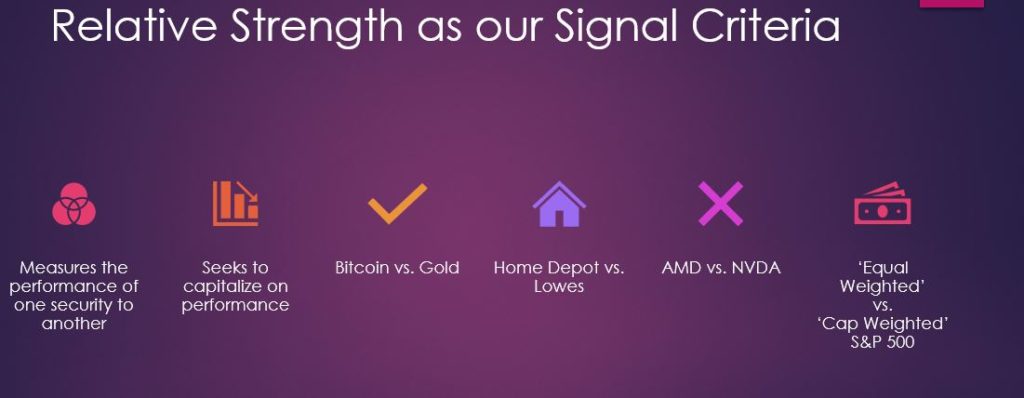Q: Are you frustrated by gold and silver’s lack of inflation protection?
A: Gold and silver are commodities. As prices increase, producers manufacture more of it to sell on the market! Farmers plant more grain as prices go higher. The Saudi’s pump more Crude oil as prices skyrocket; and cut production when there’s a glut. The same phenomenon happens with the Gold and Silver market. If gold was so scarce, why does Costco sell it?
Q: Why isn’t gold trading higher?
A: According to our calculations, gold was trading at $1,811 in 2011. Today it’s trading at $2,057*. Assuming you bought gold as protection from a dealer who charged a 15% premium commission over “spot”; Gold needs to trade at $3,147 an ounce just to breakeven after inflation! Silver as inflation protection is even more dismal!
Is the world becoming digital or less digital?
Let’s dive into the ultimate face-off: Bitcoin vs. Gold. It’s like choosing between the old school bling and the new-age digital treasure. First up, we’ve got Bitcoin – the cool kid on the block. It’s all digital, decentralized, deflationary currency with a hard coded limited supply, and shaking up the financial scene. Because of the fixed number of Bitcoin tokens available, miners cannot create more as prices rise! It’s the very definition of the type of scarcity we want for inflation protection.
Think of it like the rebel breaking free from the traditional money system. You can buy stuff, invest, and even send it across the globe without dealing with banks. It’s the poster child for the digital revolution because it cannot be as easily manipulated by the globalists.
Then there is Gold – the timeless champ. Shiny, tangible, and loved by a thousand generations. Gold has been the symbol of wealth for ages. You can wear it, hold it, and stash it away in a secret spot. It’s the bling that never goes out of style. Nothing feels better in your hand than holding a gold coin. But math shows that since 1980, it’s barely kept ahead of the rate of inflation.
Why not have the best of both worlds?
Bitcoin a.k.a. “digital gold” – is a fusion of the old-school charm of gold and the future of money. If you own gold in your IRA or 401(k), you’re probably holding shares of the SPDR Gold Trust (symbol: GLD). Since September 2011, until February 12, 2024, Gold is +18%, GDX is -53%. Gold is +18% over 12 years?
So, are you Team Bitcoin, rocking the digital revolution? Or Team Gold, keeping it classic and tangible? Maybe you’re on Team Both, enjoying the perks of both worlds. It’s your call, crypto adventurer – the choice is yours!
The objective of the Bitcoin-Gold IRA Switching strategy is to assist investors in protecting their wealth from the loss of purchasing power from inflation and massive increases in Federal debt monetization embraced by Modern Monetary policy.
Using a technical scoring system, we evaluate the two of the most popular hedges against inflation.
It’s the best of both worlds. Gold: a store of value and trusted yellow metal for thousands of years; and Bitcoin, a new digital, scarce, global reserve currency and inflation hedge.
Digital gold for a digital world: Bitcoin.
Our analysis uses “relative strength”, (“RS”) to compare one security against another, permitting an investor to own the technically strongest candidate.
Depending on your financial situation, allocating a portion of your assets into gold or Bitcoin as a hedge against the destruction of our nation’s currency may add a layer of strategic diversification.
Using Limited Discretion we monitor and manage this strategy in a self-directed Traditional IRA, “Roth” IRA, Rollover IRA or self-directed 401(k) brokerage account.

The purpose of this strategy is to provide you either with an allocation to Bitcoin using the Grayscale Bitcoin Investment Trust ETF (symbol: GTBC) or the historically proven hedge against Gold via the SPDR Gold Trust (symbol: GLD).
The strategy holds 1 position with the best relative strength choosing from GLD or GBTC. Using Relative Strength allows an investor to hone-in on the strongest ETF to capture the strongest trend and avoid the weakest trend.
Strategy Insights Cenacle Capital Management will buy the SPDR Gold Trust if its relative strength is superior compared to its rival Bitcoin.
Should Bitcoin as defined by the Grayscale Bitcoin Investment Trust indicate the potential for relative out performance, the we’ll SELL GOLD and BUY BITCOIN.
Relative strength measures the performance of one security in comparison to another. For example, how Microsoft is performing compared to the S&P 500, or how the U.S. Dollar is doing relative to the Euro.

Momentum & Relative Strength Strategy Insights “Relative Strength” is a term used to describe a systematic structured methodology of comparing price performance of one security to another.
Directionless, narrow markets and markets with transitioning leadership tend to be periods when relative strength strategies will struggle. Relative Strength seeks to capitalize on performance differences between assets classes or within asset classes.
Risk Disclosure
There are no hypothetical return profiles for this strategy. Volatility of the strategy may be materially different from the volatility of the S&P 500 index. Relative Strength is NOT a guarantee. There may be times where all investments and strategies are unfavorable and depreciate. Advisor may make modifications to the strategy at any time without notification to the client. In all securities trading there is potential for profit as well as loss. You should consider this strategy’s investment objectives, risks, charges and expenses before investing.
Back-testing involves a hypothetical reconstruction based on past market data of what the performance of a particular account would have been had the advisor been managing the account using a particular investment strategy. Back-tested performance results have inherent limitations, particularly the fact that these results do not represent actual trading and may not reflect the impact that material economic conditions and market factors might have placed on the advisor’s decision-making if the advisor were actually managing the client’s money. Any results should not be viewed as indicative of the advisor’s skill and do not reflect the performance results that were achieved by any particular client. Prior to June 2020, the advisor was not providing advice using this model.
No current or prospective client should assume that the future performance of any specific investment or strategy will be profitable or equal to past performance levels. All investment strategies have the potential for profit or loss. Changes in investment strategies, contributions or withdrawals, and economic conditions may materially alter the performance of the client’s portfolio. Different types of investments involve varying degrees of risk, and there can be no assurance that any specific investment or strategy will be suitable or profitable for a client’s portfolio.
Historical performance results for investment indexes and/or categories generally do not reflect the deduction of transaction and/or custodial charges or the deduction of an investment-management fee, the incurrence of which would have the effect of decreasing historical performance results. There are no assurances that a portfolio will match or outperform any benchmark.
Cenacle Capital Management is registered as an investment advisor and only transacts business in states where it is properly registered or is excluded or exempted from registration requirements. Registration as an investment advisor does not constitute an endorsement of the firm by securities regulators and does not mean that the advisor has attained a level of skill or ability.
Hypothetical returns discussed use the returns of other indices. The hypothetical returns have been developed by Cenacle Capital Management and have not been verified by a 3rd party. Volatility of the strategy may be materially different from the volatility of the S&P 500 index or other indexes. (5)
There may be times where all investments and strategies are unfavorable and depreciate, and material market or economic conditions may impact the results portrayed. (1) Advisor may make modifications to the strategy at any time without notification to the client. In all securities, trading there is potential for profit as well as loss. (4) You should consider this strategy’s investment objectives, risks, charges, and expenses before investing. Back-testing involves a hypothetical reconstruction, based on past market data, of what the performance of a particular account would have been had the adviser been managing the account
using a particular investment strategy. Performance results presented do not represent actual trading using client assets but were achieved through retroactive application of a model that was designed with the benefit of hindsight. Back-tested performance results have inherent limitations, particularly the fact that these results do not represent actual trading and may not reflect the impact that material economic conditions and market factors might have placed on the adviser’s decision-making if the adviser were managing the client’s money.(7) These results should not be viewed as indicative of the adviser’s skill and do not reflect the performance results that were achieved by any particular client. Prior to June 2020, the adviser was not providing advice using this model and clients’ results were materially different. The model that gave rise to these back-tested performance results is one that the adviser is now using in managing clients’ accounts.
Performance results are not presented “net-of-fees” and do not reflect the reinvestment of dividends or the expense of commissions and transaction fees. (2,3) No current or prospective client should assume that the future performance of any specific investment or strategy will be profitable or equal to past performance levels. The Funds are non-diversified, meaning they may concentrate its assets in fewer individual holdings than a diversified fund. Investments in smaller companies tend to have limited liquidity and greater price volatility than large-capitalization companies. Diversification does not assure a profit or protect against a loss in a declining market. All investment strategies have the potential for profit or loss (4). Changes in investment strategies, contributions or withdrawals, and economic conditions may materially alter the performance of your portfolio. Different types of investments involve varying degrees of risk, and there can be no assurance that any specific investment or strategy will be suitable or profitable for a client’s portfolio. Historical performance results for investment indexes and/or categories generally do not reflect the deduction of transaction and/or custodial charges or the deduction of an investment-management fee, the incurrence of which would have the effect of decreasing historical performance results. There are no assurances that a portfolio will match or outperform any particular benchmark. Cenacle Capital Management is registered as an investment advisor and only transacts business in states where it is properly registered or is excluded or exempted from registration requirements. Registration as an investment advisor does not constitute an endorsement of the firm by securities regulators and does not mean that the advisor has attained a level of skill or ability.
The performance numbers on this page are price returns, not inclusive of dividends or all transaction costs. Past performance is not indicative of future results. Potential for profits accompanied by possibility of loss. The information found on this page has been prepared without regard to any particular investor’s investment objectives, financial situation, and needs. Accordingly, investors should not act on any recommendation (express or implied) or information in this report without obtaining specific advice from their financial advisor and should not rely on information herein as the primary basis for their investment decisions. Neither the information nor any opinion expressed shall constitute an offer to sell or a solicitation or an offer to buy any securities or invest in the strategy. Notations reference the SEC Clover Capital No Action Letter regarding proper disclosure of risks and rewards of an investment strategy.
